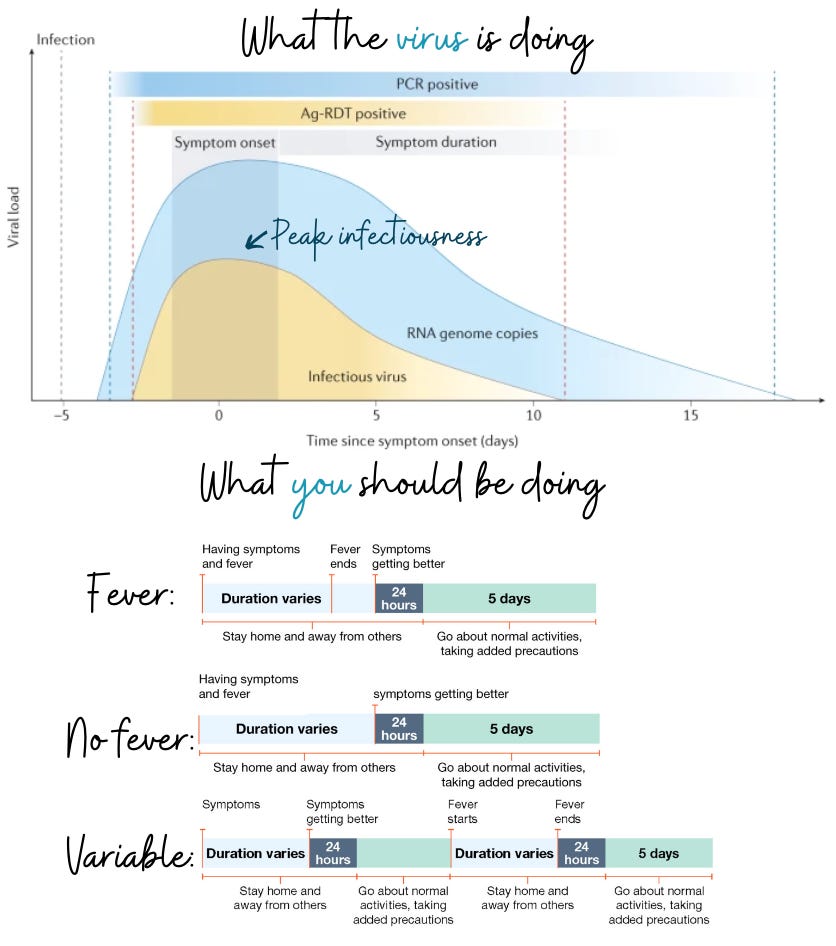CDC Updates Isolation Guidelines
| The CDC announced updated virus guidance for Covid-19 (and flu and RSV and any common respiratory illness). |
What does the updated guidance say?
The best thing you can do hasn’t changed: Prevent illness in the first place through vaccination, ventilation, and masking.
But, if you’re sick with any common respiratory illness (i.e., not measles), CDC says to approach it in two phases:
- Phase 1: Stay home when sick until your fever resolves for 24 hours and your symptoms improve.
- This is when you’re most contagious (see figure below.)
- Not all infections result in a fever, so paying attention to other symptoms (cough, muscle aches, etc.) is important. The severity of symptoms is loosely connected to contagiousness.
- What does symptoms improving mean? CDC doesn’t define it, but some local health departments do: It’s when “a person no longer feels ill; they can do their daily routine just as they did before they were ill, and any remaining symptoms, such as a cough or runny nose, are very mild, or infrequent.”
- Phase 2: Use caution for five days after take additional precautions (e.g., wear a mask, use at-home Covid-19 tests before seeing grandma at the nursing home).
- This is important because people remain contagious beyond the “stay-at-home” period.
This is what it could look like in different scenarios:
 |
Top figure from Nature. Bottom figures from CDC. Annotations by YLE (Your Local Epidemiologist)
Questions?
Reach out to Health Services 508-793-2276 or Kristin Gauthier, Public Health Nurse: kgauthier@holycross.edu


